#jasta 2
Text

"When skill and manners mattered". The great Hauptmann (Captain) Oswald Boelcke, Jastaführer (Squadron leader) of Jasta 2, the finest pilot of WW1, shakes hands with his 20th victim, Captain R E Wilson, 32 Squadron RFC, 2 September 1916. Boelcke was flying his Fokker D.III, (352/16). Boelcke was killed in a friendly collision two months later with a score of 40, the highest scoring ace in Germany at the time
#germany#ww1#ww1 germany#ww1 aircraft#ww1 german air force#ww1 german aircraft#1916#oswald boelcke#fokker d.iii#jasta 2
72 notes
·
View notes
Text

1918 04 Remember me - Russell Smith
Remember Me? depicts a hypothetical but plausible encounter between and Bristol F2.b of 48th Squadron, RAF and a Fokker Dr.1 triplane piloted by Leutnant d. R. Friedrich "Fritz" Kempf of Jasta 2 (Boelcke). The scene depicts Kempf zooming up and past the Bristol, catching the crew by surprise. The client was fairly specific about the attitudes and positions of the aircraft, but he left the overall composition and the choice of Bristol markings up to me.The Bristol Fighter was a maneuverable, heavily armed two-seater biplane, and one of the most successful fighters of the war. It got off to a poor start during "Bloody April" when it was introduced to the Western Front by the inexperienced pilots. Believing that the aircraft was structurally weak, pilots avoided violent maneuvers during combat. It was soon realized, however, that the Bristol fighter was actually a very sturdy aircraft that could be maneuvered as if it were a single seat fighter with rear protection. Bristol crews met with great success by using their aircraft in that capacity. By the end of the war over 240 pilots and gunners achieved ace status in the type. My choice of markings for this particular Bristol was personal. Growing up in SC I often attended the Shawfest airshow at Shaw Air Force Base located in Sumter. In my 20’s, as a budding aviation artist, I donated a painting to the 20th Fighter Wing which was based at Shaw AFB at the time. For those reasons I have had long felt a familiar connection to Shaw AFB. A few years back, though that connection became very personal. While doing some research on Ancestry I found that I had a great great grandfather who was a Shaw and who was born in Sumter, SC. I knew immediately there had to be a connection to Shaw AFB. After further research I came to find that Shaw AFB was named after 1st Lt. Ervin David “Molly” Shaw, the first Sumterite killed in the WWI & the only Sumter Aviator to die in combat. Shaw served with the 48th Squadron, RAF, British Expeditionary Force. In combat, he is credited with shooting down two enemy aircraft. On July 9, 1918, well behind enemy lines on a scouting mission, he and his British observer were greatly outnumbered by enemy scout planes and they perished in battle. They were flying Bristol F2b B-1113 at the time. As it turns out, 1st Lt. Ervin David Shaw, after whom Shaw AFB is named, was my great-grandmother’s cousin!Frederich "Fritz" Kempf was born in May 1894 in Freiburg in the town of Breisgau in the southwest of Baden-Württemberg. At age 19, he joined infantry in October 1913 and by August of the following year was promoted to Unteroffizier . After being wounded in battle and a lengthy hospital stay he applied for a transfer to the Luftstreitkraefte. Once accepted he arrived at FEA 3 in Gotha on May 6, 1915. He was then sent back to Freiburg to complete training and then on to FEA 9 at Darmstadt at the end of November 1915. In March 1917, after serving with various aviation units, he received the Iron Cross 1st Class and joined Jasta 2 "Boelcke". He scored his first victory on 29 April - a BE2c near Le Pave. His second was a Sopwith Pup on 5 June at Masnieres, then the 3rd was a Camel on 20 Oct. at Gravenstafel.He was sent to Jasta-Schule I as an instructor , returning to Jasta Boelcke in January 1918. On 8 May he scored his fourth victory, a Camel west of Steenwerke. He returned to Jasta-Schule I in August 1918 where he served until the end of the war. Although he only had 4 victories to his credit at war’s end, Kempf was none the less a respected and valued member of Jasta Boelcke. He died in August 1966.Of the aircraft that Fritz Kempf flew during his wartime career, perhaps the most recognizable were a pair of Fokker Dr.1 triplanes which carried similar
46 notes
·
View notes
Text
tagged by the lovely @cptn-nash, thank you bb 😚
last song: alien superstar by beyoncé
currently reading: the housemaid
last film: jumanji 2
currently craving: a warm brownie & some ice cream would be SO good
three ships: steroline (tvd), booth & bones (bones), nabrina (caos) - honorable mentions are morcia/hotchgan (cm) & matti/jasta/jory/viksteven (ocs x various moonknight boys)
first ship: piper & leo
favorite color: brown. it’s so warm.
currently working on: lots of things but most actively: in plain sight, a joel two parter, a oneshot for MK bingo & possibly a javier peña 2 parter
no pressure tags: @doctorstethoscope @hotchs-bitch @juneknight @marc-spectorr @toracainz @mccn-bcys @soft-girl-musings @hon3yboy @virtie333 @masterwords @lesbianhotch @veritable-trash @gingersforeverbox
20 notes
·
View notes
Text
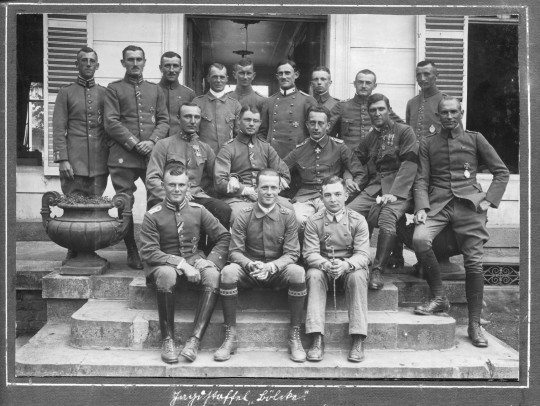
A group photo of Jasta 2 "Boelcke" around 1917 when Otto Bernert was leader . You can see they had two guests from Austria-Hungary's K.u.K:-)
Naming the ones I only recognise ,,, if anybody else recognises anyone , please do let me know:)
Friedrich "Fritz" Kempf and Hermann Frommherz
(This photo actually comes from the site dedicated to Fritz Kempf ! I will put the link somewhere below so you could pay a visit to it:-)

Otto Bernert and Werner Voss

Georg Zeumer and Karl Bodenschatz
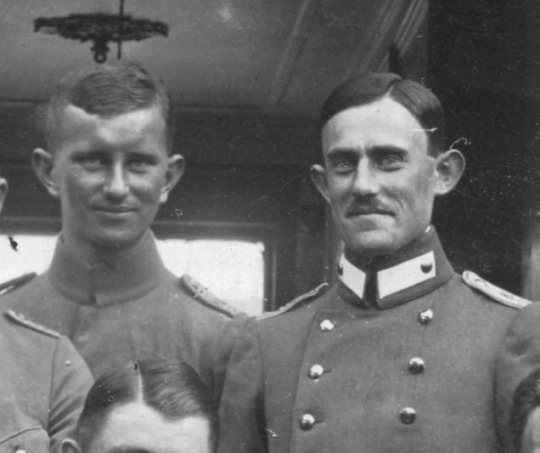
Raoul Stojsavlesevic

Franz Pernet

Robert Strey

#ww1 pilots#aviation#great war#Otto Bernert#Werner Voss#pls check out the kempf site very cool and very 4k picture scans 💪
17 notes
·
View notes
Text
Ein Heldenleben (A Hero's Life) is an expanded version of Manfred von Richthofen's memoir Der Rote Kampfflieger (The Red Baron). In addition to the autobiography, it includes letters from Manfred to his family (like the 1933 edition) and some chapters that were not included in the book, as well as other comments and anecdotes from people who were close to him. It also includes accounts by his brother Lothar von Richthofen.
Overview:
Visit to the Great Headquarters
My Engagement
A flight in an observation balloon
A day at Staffel 11 (by Lothar von Richthofen)
At Jagdgeschwader Richthofen (by a Dutch reporter)
Richthofen as leader and comrade (by Leutnant Friedrich Wilhelm Lübbert, Jasta 11)
In memory of Richthofen (by v. B.)
An encounter (by Emil August Glogau)
The mother about the boy Manfred
Letter by Leutnant Hans Joachim Wolff to Leutnant Lothar Freiherr von Richthofen
How Richthofen shot down his seventy fifth victory (by Leutnant Lampel)
Richthofen (by Erich von Salzmann):
Part 1
Part 2
Part 3
At court for the second time
Letters of Erwin Böhme: Before the war, Erwin Böhme worked as an engineer in East Africa. When the war started he was already 37 years old. This did not stop him and he became a successful fighter pilot, being personally selected by Boelcke to join his fighter squadron. In 1916 he met the daughter of a former business colleague and they fell in love. The following letters are those Böhme wrote to his later fiancée Annamarie during the war days.
[Translated are the parts of the letters where Böhme describes his life as a fighter pilot.]
Landres, 24 June 1916
Kowel, 7 July 1916
Kowel, 3 August 1916
Kowel, 15 August 1916
Bertincourt, 11 September 1916
Bertincourt, 21 September 1916
Somme, 4 October 1916
Somme, 18 October 1916
Lagnicourt, 31 October 1916
Lagnicourt, 12 November 1916
Jagdstaffel Boelcke, 12 December 1916
Partenkirchen, 28 January 1917
Jagdstaffel Boelcke, 8 April 1917
Valenciennes, 25 April 1917
Valenciennes, 9 May 1917
Valenciennes, 3 July 1917
Jagdstaffel 29, 16 July 1917
Jagdstaffel 29, 7 August 1917
Jagdstaffel 29, 17 August 1917
18 August 1917
Jagdstaffel Boelcke, 21 September 1917
“With the aces”, 20 October 1917
Rumbeke, 31 October 1917
Back with the aces again, 31 October 1917
4 November 1917, Sunday morning
Jagdstaffel Boelcke, 14 November 1917
Bavikhove, 16 November 1917
Bavikhove, 19 November 1917
27 November 1917
The End
Rudolf Berthold – a man who never let himself be dissuaded from his convictions. A man who, despite the worst injuries always returned to the front as quickly as possible. A man for whom the war was not over, even if it was over for his country. A summary of Bertholds life can be found in the pinned post over @subtile-jagden
The following are translated diary entries as well as some of his letters.
Before mobilization
It is getting serious!
First challenges
Emergency landing
Important reconnaissance flights during the advance
The most beautiful day of my life!
Finally a pilot!
Buddecke, the dear comrade!
Feldfliegerabteilung 23
End of 1915
Single seater fighter unit Vaux and the first victories
An unfortunate day for Berthold
Back to the unit
Jasta 4, the Pour le mérite and a new challenge
Beginning of 1917
Finally off to Flanders
End of 1918: Ceasefire and revolution
1919 / 1920: Uncertainties, Soldier´s Councils and the Last Fight
Ernst Jünger was a passionate diarist. During his time in the First World War, he filled 14 diaries. Based on these entries, he wrote his popular book Storms of Steel. The diary entries provide additional information, funny stories and reveal his true feelings during this turbulent time.
First experiences
Officer Candidate and Relocation
First Cannonade
First wound
Back at the front
Days at the front and stories from old friends
Quéant
Friendly contact with the enemy
New year, same situtation
A love affair
Officer training course
Back in the trenches and dangerous patrols
Mine warfare and gas attacks
An English prisoner and a funeral
Summer 1916
Battle of the Somme Part 1
A short break from fighting and another injuriy
Wartime conditions
Another injury
30 notes
·
View notes
Text
Werner Voss - Part 2
When Voss returned to the front in May, the playing field was more level. Before this, German aircrafts were far superior to British and French ones. Now, the Entente had improved aircrafts, such as the SE5, which could more than compete with the German Albatros D.III and D.V. Voss shot down his first SE5 on May 7th, 1917. He continued scoring during early summer and his reputation as one of the best fighter pilots alive (bested only by Manfred von Richthofen) was established.
An interesting aspect of Voss´s personality was that he was not limited by rank. In the German army (as with most armies of the time), officers usually did not consort with the lower ranks. Voss was an officer, and one who had received the highest award possible, but he distanced himself from the circle of COs. Instead, he spent a lot of time with mechanics he had befriended and helped repair his own airplanes. His youth and middle-class upbringing most likely influenced this behavior. One of his past times was working on and riding his motorcycle.

Voss’s behavior was somewhat controversial. It is suspected that he fell foul of several higher ranked officers because he had trouble accepting the authority of those he disagreed with. He even tried to get his CO removed because he thought the man was not daring enough and unworthy to lead as venerated a unit as Jasta Boelcke. Voss was subsequently appointed Staffelführer of Jasta 5. Here again, speculations come up about Voss being purposely held back to let Richthofen be the shining star, but this should be dismissed as unfounded rumors spread by people who dislike MvR.
Though Voss was by his own admission no great leader, he did well in Jasta 5. With his colorfully painted Albatross D.III, he patrolled over the lines, raising his victory score to 30 by June.
On June 28th, 1917, Voss became Staffelführer of Jasta 29. But this only lasted five days as he was called by Manfred von Richthofen to take over Jasta 14 and then Jasta 10 of JG1, Richthofen’s famous Jagdgeschwader. Again, Voss had trouble adjusting to his commanding role. All he wanted to do was fly and fight, not do administrative work more than anything else. So, he appointed an assistant to do that for him.
During the summer of 1917, Voss continued to score victories without sustaining any injuries. By the end of August he had added eight more, bringing his total to 38.
At the end of August, Voss went on leave again. After a close call with a British pilot which he barely escaped, Voss is said to have been very stressed and nervous. After spending a few days at home in Krefeld, he visited the Fokker Flugzeugwerke in Schwerin to test-fly a new model. Upon his return, he would add ten more victories to his score before his luck finally ran out.
His demise is famous across nations. His skill and tenacity are mentioned whenever war aviation is the topic.
On September 23rd, 1917, Voss set out on a hunt for enemies by himself. Soon he shot down a bomber plane, killing the two occupants. It was to be his final victory. He returned to his airfield, greeted by his two brothers who had come to visit. They ate lunch and took a picture together, the last one of Voss alive.
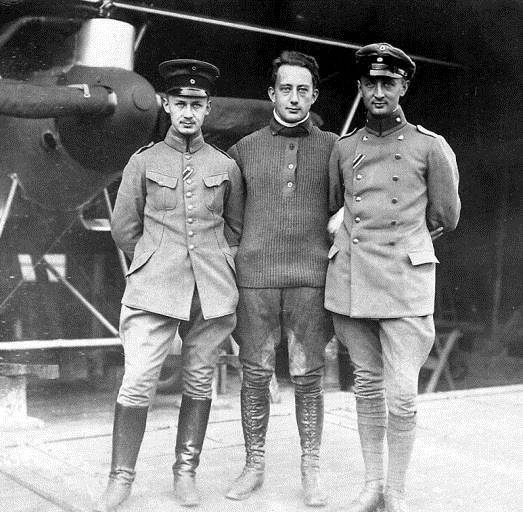
At around 5 p.m. Voss took off again on his final patrol. He was with other pilots from the unit, but Voss was able to climb quicker than the rest and his comrades soon lost sight of him. Meanwhile, on the other side of the lines, the British 56 Squadron went up with the same intentions as Jasta 10. Inevitably, the parties met and engaged in the greatest air battle of WWI. It is still unclear what is truth and what is fiction of the many retellings of this fight. But one thing is clear: Werner Voss saw the enemy aircraft far outnumbering him and instead of turning around, he confronted them head-on and was able to damage every single plane before being killed. After around 10 minutes of intense fighting with at least six enemies, Voss's airplane reportedly dropped suddenly and crashed.
His death was attributed to Arthur Rhys Davis, though there is still some doubt as to who was truly responsible.
Voss’s final fight is an interesting contrast to one of Richthofen’s. MvR and several comrades encountered a lone enemy, but instead of them all attacking him, only Richthofen fought while his comrades held back and ensured no other enemy pilot approached. If only the British had acted that way in Voss’s last fight.
"I shall never forget my admiration for that German pilot, who single handed, fought seven of us for ten minutes . . . I saw him go into a fairly steep dive and so I continued to watch, and then saw the triplane hit the ground and disappear into a thousand fragments, for it seemed to me that it literally went into powder." James McCudden
"His flying was wonderful, his courage magnificent and in my opinion he is the bravest German airman whom it has been my privilege to see fight." James McCudden
"If I could only have brought him down alive..." Arthur Rhys Davis
He was buried where he crashed but subsequent fighting in the area quickly made it impossible to find his grave. He is honoured on the wall of the Soldatenfriedhof at Langemark.

RIP Werner Voss (1897 – 1917)
Sources:
September Evening: The Life and Final Combat of the German World War One Ace Werner Voss, by Barry Diggens 2003
Unter the Guns of the German Aces, by Norman Franks and Hal Giblin 1997
My thanks to @ivy-and-edelweiss for proof reading and correcting my terrible grammar when neccessary!
25 notes
·
View notes
Text

At 11:40hrs on 8 April 1917, Manfred von Richthofen of Jasta 11, in his Albatros D-III, shot down a Sopwith 1&1/2 'Strutter' of 43 Squadron near Farbus.
@ron_eisele via X
3 notes
·
View notes
Text









On 17 March 1918, Manfred von Richthofen (as commander of JG I) paid a visit to the airfield of Jasta 5 at Boistrancourt; he flew the Jasta 6 Fokker Dr.I 525/17. He was accompanied by Jasta 11’s Ltn. von Linsingen who flew Dr.I 163/17 from his own Staffel. Richthofen’s visit to Oblt. Richard Flashar, CO of Jasta 5, was probably to discuss details of the fighter operations in the coming great offensive in the northern sector of the 2. Armee area. Jasta 5 would join with Jasta 46 in Jagdgruppe 2, which operated in conjunction with the Richthofen Geschwader. The visit was recorded in a number of excellent photos, capturing both von Richthofen and the two Triplanes. The first, very familiar view shows a smiling Richthofen on the left of Dr.I 525/17. L to R: Richthofen, a mechanic, Ltn. Hans-Joachim von Hippel, Oblt. Flashar, unknown, Ltn. Schloemer and Ltn. Lehmann. Other photos portrayed Richthofen in conversation with Flashar, and the two Dr.Is, which were a novelty at Jasta 5 as it was still equipped with Albatros and 1 or 2 Pfalz.
14 notes
·
View notes
Text
small heads up; I am currently thinking about merging the Ch2 jasta 11 and RFC releases into two seperate ones on GlobalComix (they'll be titled "Chapter 2 Part 1" and "Chapter 2 Part 2" respectfully) to make it less cluttered and chaotic for future readers. Links to updates shared on Twitter and Tumblr will stop working as a byproduct of that.
I'll probably wait a week or two since the last update is still fresh, but I wanted yall to know :)
6 notes
·
View notes
Text
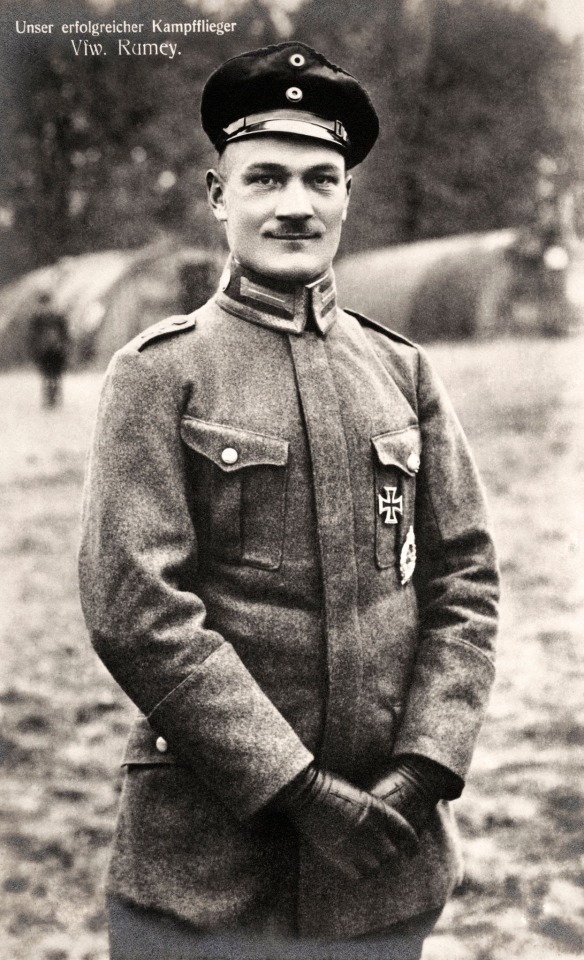
45 victory ace and Pour le Mérite (Blue Max) holder, Vizefeldwebel Fritz Rumey. When the war began, Rumey was serving with the 45th Infantry Regiment. After serving with the 3rd Grenadier Regiment on the Russian Front, he transferred to the German Air Force in the summer of 1915. Serving first as an observer with FA(A) 219, he completed Jastaschule and was assigned to Jasta 2 in May 1917. The following month, he joined Jasta 5. He was wounded in action on 25.8.1917 and again on 24.9.1917. He was a scoring machine of a pilot, shooting down 40 aircraft in nine months of 1918, including 16 in September alone. In his last dogfight, Rumey's Fokker D.VII was badly damaged when he collided with an S.E.5a flown by South African ace George Lawson. Rumey jumped from his plane but was KIA on 27.9.18 when his parachute failed to open. For more, see my Facebook group - Eagles Of The Reich
13 notes
·
View notes
Text

1917 06 06 Collecting a Fee - Russell Smith
Collecting a Fee is a depiction of Ltn. Werner Voss’ 33rd victory, which he scored on June 6, 1917. The victim was 22 Sq. FE.2b A857 crewed by Capt. Francis Don and 2 Ltn. Herbert Harris. At the time Voss was serving with Jasta 5 and flying his colorfully marked Albatros D.III which carried a heart insignia on the fuselage and turtledeck, and a lucky swastika surrounded by laurel leaves
27 notes
·
View notes
Photo

Manfred Albrecht Freiherr von Richthofen (German: [ˈmanfreːt fɔn ˈʁɪçthoːfn̩]; 2 May 1892 – 21 April 1918), known in English as Baron von Richthofen or the Red Baron, was a fighter pilot with the German Air Force during World War I. He is considered the ace-of-aces of the war, being officially credited with 80 air combat victories.
Originally a cavalryman, Richthofen transferred to the Air Service in 1915, becoming one of the first members of fighter squadron Jagdstaffel 2 in 1916. He quickly distinguished himself as a fighter pilot, and during 1917 became the leader of Jasta 11. Later he led the larger fighter wing Jagdgeschwader I, better known as "The Flying Circus" or "Richthofen's Circus" because of the bright colours of its aircraft, and perhaps also because of the way the unit was transferred from one area of Allied air activity to another – moving like a travelling circus, and frequently setting up in tents on improvised airfields. By 1918, Richthofen was regarded as a national hero in Germany, and respected by his enemies.
Richthofen was shot down and killed near Vaux-sur-Somme on 21 April 1918. There has been considerable discussion and debate regarding aspects of his career, especially the circumstances of his death. He remains one of the most widely known fighter pilots of all time, and has been the subject of many books, films, and other media.
3 notes
·
View notes
Text
Finally off to Flanders
During summer 1917 Berthold sustained another serious injury, he was shot though the right calf.
15 August 1917
Now I have to start all over again. In Flanders, the English have so far dominated the air, so good fighter pilots are even more necessary than infantry. It is with a heavy heart that I say goodbye to my people of the Jasta 14 and go to Flanders alone.
My new squadron first needs thorough flying training, I want to use the whole of August to practice.
Already the English offensive begins to fizzle out like the French enterprise on the Aisne.
At last my fight for a better organisation of the airmen is showing some success, since I have recently got the commander of the Flanders Army on my side: At my suggestion, four squadrons are always united into so-called fighter groups and these are placed under the leadership of old, proven fighter pilots.
20 August 1917
Today I received a picture and a few friendly lines from Prince Eitel Friedrich. A few weeks ago, when I was still with 14, I got to know the prince as a simple, natural person with a strict sense of duty. I had been to dinner with him one Sunday. There was only soup and a piece of meat with vegetables. No feasting and material ostentation, which might be a privilege for wretched parvenus, but downright Spartan-like, old Prussian simplicity! When I think of this, I realise that we Germans should be happy and grateful to have at the head of our empire a Hohenzollern dynasty that has not only led throughout the centuries, but also preserved a genuinely German way of life.
6 October 1917
My Jasta 18 has now become the core troupe. In September, it had already achieved 32 aerial victories. There is now no pilot without his own victory. This is not my doing, I merely trained them and led them to the enemy, showed them how to attack. The attack itself, the killing of the enemy, the main thing, is the achivement of the pilots. Their brilliant fulfilment shows what an outstanding spirit there is in the entire Jasta, in each individual!
I quickly settled in at 18. Two old good friends are faithfully at my side: Seppl Veltjens and old Mr Dingel. If Seppl stays alive, he will achieve great successes. He is like a young hunting dog: he still hasn't got the hang of it, even though he has already made quite a nice number of kills. He still lacks the eyes and the calm, cold calculation in difficult moments. But I will teach him what is missing. Old Mr Dingel and Father Turck are loyal, they never let our Jasta down and, even if they don't shoot any more themselves, they often help more with their decent attitude. They are the guarantors that an impeccable tone, a decent conception and a right aviation spirit always remain alive in the Jasta. Every busy day of flying tires me out, so I can't devote as much time as I used to to the organization and the comradeship.
Now it is the 4th time that the Jasta has cleaned up in the English bomb squadron which was considered unassailable! Apart from my opponent, 2 others have been brought down. It is my 28th! The mechanics are beaming. When we come back from a flight and there isn't a single enemy smashed up, they make a very reproachful face. The good guys!
Another severe injury!
On 10 October Berthold shot down his 29th opponent. In the process, he was shot in the upper right arm from the side, shattering the bone. He still managed to land safely, but had to be rescued unconscious from the machine. The serious injury could not be treated in the field hospital; Berthold was sent to a hospital in Berlin, where his sister Franziska was a head nurse. His wound is severe: the right upper arm is completely shattered, broken like an oak that has been struck by the deathblow. He has to spend 4 month in the hospital. On his insistance he returned to the front, where he lead the newly formed Jagdgeschwader 2. His arm was still not properly healed, painfull and lame. Still, on 28 Mai 1918 he shot down another victory.
On 10 August 1918 he shot down his 44th victory but during the fight his plane is so damaged that he crashes. Badly injured again, with his right arm broken once more, he is taken to a field hospital from which he soon escapes. But soon wound fever sets in and he has to admit to himself that the war is over for him. He returns home.
2 notes
·
View notes
Text
Werner Voss - Part 1
Werner Voss - one of the fan favorites. Regrettably, at the age of 20, his life was already over, but he went out with a bang.
This article serves to give an overview of his life and remember an exceptional human who, like so many others, was caught up in a situation he had no control over and paid for it with his life.
Werner Voss was born on 13 April 1897 in Krefeld, German Empire. He came from an affluent family, his father owning a cloth dying business.
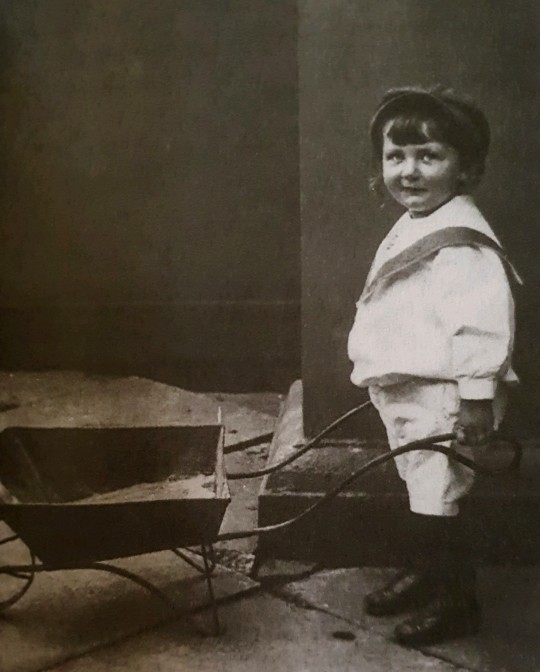
Voss had two brothers and for a long time it was thought he also had two sisters. As it turned out, however, the two girls who often appear in family pictures and are rumored to have charmed Manfred von Richthofen were Voss's cousins.
In early 1914, with tensions already running high across Europe, Voss joined the Ersatz Eskadron 2 of the Westfälische Husaren-Regiment Nr. 11. When the Great War broke out a few months later, Voss was just 17 years old but immediately joined active service in November 1914. Hussars are cavalrymen, but the use of cavalry soon died out as the war shifted towards the trench warfare we all are familiar with.
Young Voss was sent to the Eastern Front where he fought during the war's first winter. In May 1915, he earned his first decoration, the Iron Cross 2nd Class, and was promoted to Unteroffizier.
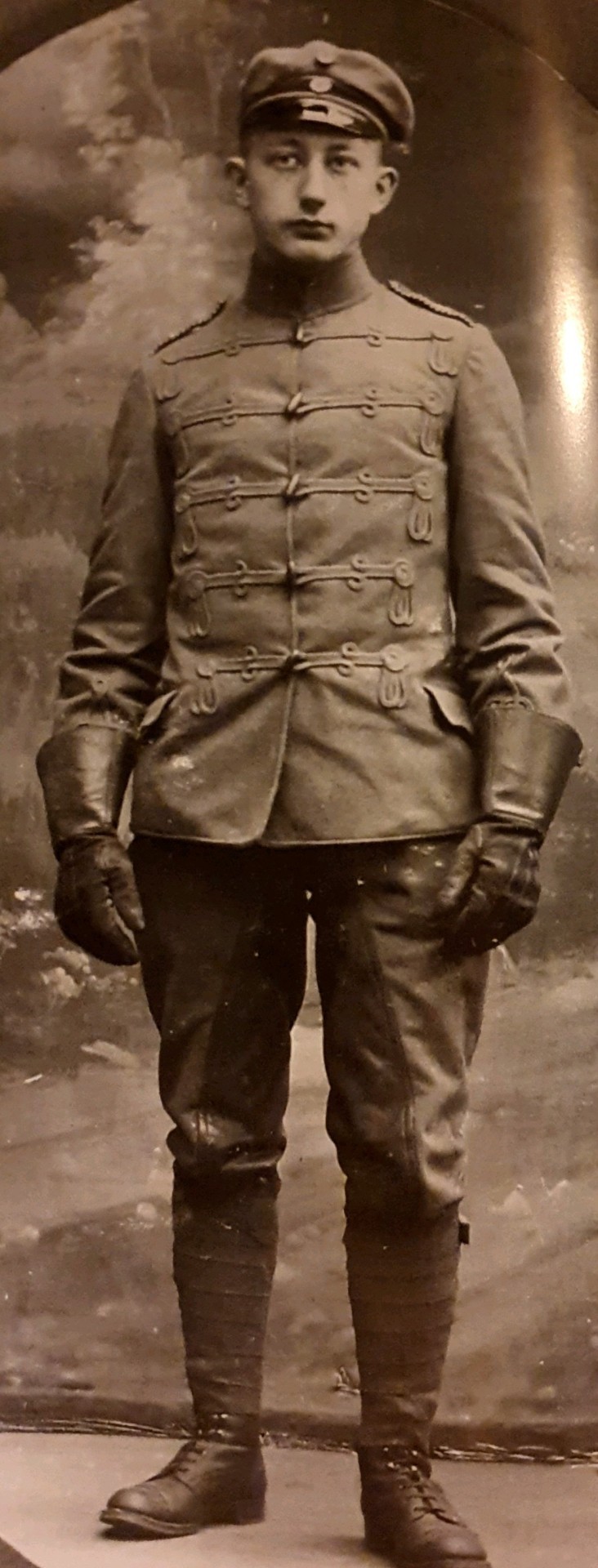
Not being all that enthusiastic about sitting in mud all day, Voss transferred to the Air Service. From September 1915 until February 1916 he trained as a pilot near his hometown. In March, he was posted to Kampfstaffel 20 as an observer. From then on his duty involved flying over the Verdun area, dropping bombs on enemy artillery positions and photographing the area.
After the hell of Verdun, Voss got no reprieve as he was sent to the Somme to fight off the British offensive.
After receiving his pilot badge, Voss transferred to the single-seat pilot’s training school. In November 1916, he was officially posted to the Königliche Preußische Jagdstaffel Nr. 2. Yes, the one of the famed Oswald Boelcke. Another notable member of this Jasta: Manfred von Richthofen. But by November, Boelcke was already dead and morale was low. Boelcke’s successor, Stefan Kirmair, may have chosen Voss, but it is also possible that Boelcke himself mentioned wanting Voss as both were stationed at the Verdun Front at the same time and may have come into contact there. A signed portrait of Boelcke in Voss’s possession hints that they did know each other personally. Voss shot down his first victory one day after arriving at Jasta 2, marking November 1916 as the start of an exceptional career.

Most people know of the friendship between Werner Voss and Manfred von Richthofen as documented by pictures of them together visiting Voss’s family. This friendship started in Jasta Boelcke with MvR teaching Voss how things were done there. Rumored rivalry between the two talented pilots seems to be pure gossip. Both men may have humorously competed with each other for higher victory scores, but they both shared the same goals. They complimented each other in that MvR was a great leader but no exceptionally great pilot, while Voss was a great pilot but no great leader.
MvR was a guest of the Voss family in Krefeld on multiple occasions, with Richthofen also having permission to use the family's hunting lodge in the Black Forest. Even after Voss’s death, MvR kept contact with the family.


Voss stayed with Jasta 2 during the infamous Bloody April, a time which was indeed very bloody for the men of the British air service. They lost more aircrews during April 1917 than at any other time during the war. By April, Voss had 25 victories under his belt. On April 8th, he finally received the coveted Orden Pour le Mérite, Germany's highest military award. All that even before he turned 20.
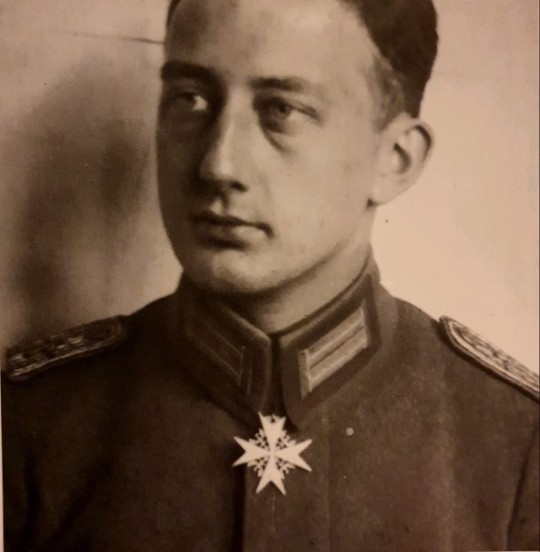
As he was on leave, Voss didn't actually participate all that much during Bloody April. Considering his many victories, it would be interesting to know how many more he would have gotten, had he fought during this time as well.
25 notes
·
View notes
Text

Lt. Paul Kempf, of Jasta 2 Boelke: Kennscht mi noch? is Swabian dialect for 'Kennst Du mich noch?' English: Do you still remember me?.
@ron_eisele via X
4 notes
·
View notes
Text
This is my new Blog, it shows some of my 1/32 Scale Model Planes. Mostly Fighters from WW I.
How to do it, Step by Step, from the Beginning to the Finish.
I'll start with a Fokker F1 103/17 flown by Werner Voss in 1917 while serving in Jasta 10
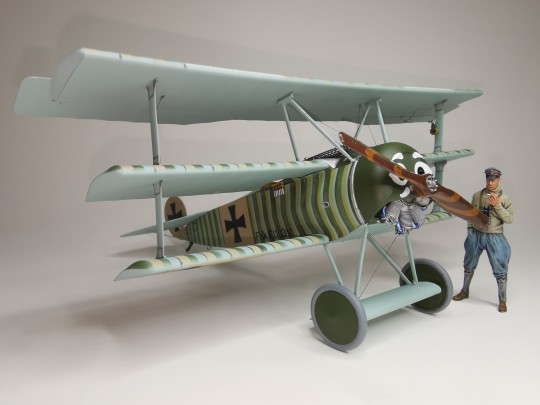
1. Start with the Engine



2. The Cockpit


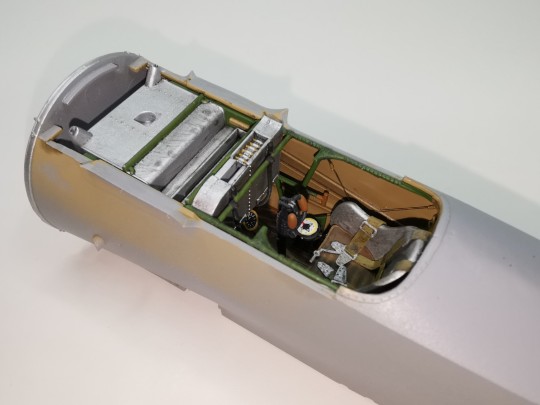
3. The "Spandau 08/15" Machinegun


... to be continued ...
1 note
·
View note